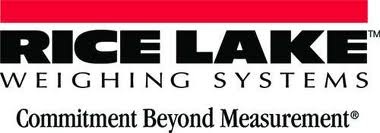A large customer of Left Coast Scales is a leader in packaging technologies, manufacturing materials from bubble wrap to bio-degradable foam packing. This customer approached Left Coast Scales looking for a solution to an inventory problem at their Southern California location. I had been working with them for several years doing scale calibration and maintenance, and they wanted to know if I could help them weigh their product since they were having a problem with inventory on the resin they used in their bubble wrap line. The material was supplied by rail car, and stored in silos on site. The material is a dry pelletized resin that is transferred directly to the production line with a vacuum conveyor. The amount of material that is in a rail car is known, and should result in a specific amount of product with a specific amount of spoilage, however the numbers weren’t adding up and 40 tons of material was missing in the last year. Where was it going? Was it not being recieved? Were they using too much of it? Were they losing some of it to theft or conversion?
Several easy solutions presented themselves for resolution of this problem. The rail cars could be weighed on-site, the storage silos could be weighed after filling, and the material could be weighed as it was used. The first two options were impractical in this instance due to the site location for a rail scale and construction of the silo didn’t allow for modification. Because the material is being transferred via vacuum conveyor directly to the production line, into a bulk storage hopper that is integrated into the forming machine, it wasn’t practical to weigh it at this point. An intermediate weigh hopper was needed. The material would be batched into the weigh hopper until a set-point was met, the conveyor would be stopped, the material weighed and accumulated and then dumped into the forming machines bulk storage hopper. A series of bindicators in the bulk storage hopper would be used to prevent the weigh hopper from dumping and also tell the weigh hopper when to start loading.
I chose Rinstrum to supply the controller for our project. Rinstrum’s R420 digital weight indicator comes in several different configurations, from a basic Gross, Tare, Net indicator (R420-K401) to a six ingredient 10 stage batch controller (R420-K411). I chose the R420-K410-A, a panel mounted single ingredient batch controller to control the process, with a Rinstrum D320 remote display for displaying the accumulated totals. The R420 was the perfect controller for this job, with a three stage batching engine that allowed me to check for batching conditions with interlocks such as the dump enable, fill enable and batch interlocks.
I defined the sequence of operation for the system as follows:
1. The bulk storage hopper would reach the low level alarm and request more material.
2. (Stage 1) The system would check to ensure the weigh hopper’s dump gate was closed then start filling it to 750lbs.
3. When the hopper exceeded the set-point it would tell the system to stop sending material. (I couldn’t get the weight to meet the set-point exactly due to the volumetric filler on the pneumatic conveyor system.)
4. After the hoppers weight stabilized the weight in the hopper would be added to the accumulator, and the accumulated weight would be shown on the D320.
5. (Stage 2) The scale controller checks to see if there is any room in the bulk hopper through the use of the high level alarm. If there is room the weigh hopper opens the dump gate and empties all of the material till the scale is empty, then closes the gate. If there is no room, the hopper waits till the bulk storage hopper requests more material before emptying. (This stage is where the scale spends the most time, waiting to dump.)
6. The scale returns to Stage 1 in a continuous cycle.
After completing the installation, testing the equipment and ironing out the bugs the system worked flawlessly. I trained the operators, turned the system over to production and the system was up and running. Everything worked for several weeks until I found that power at the site was not always reliable. The plant would occasionally lose power. I was suddenly hit with the question, “What happens if the system is batching material into the weigh hopper and all of sudden the power goes out?” I lost a couple of loaded hoppers worth of material when this happened. The solution took a little creative thinking about how the system needed to operate. I ended up swapping stages 1 and 2. Now if the hopper was at zero when started it would immediately go to stage 2 and start filling. If it wasn’t at zero it would wait till there was room and dump. I set it up this way under the assumption that there would be material in the hopper when power was lost and I needed to start at zero for the accumulations to work correctly. I then installed a UPS to power the controller when the power went out. When power is lost the R420 will receive a signal from a relay that I installed on line power causing the instrument to stop filling, accumulate the batch and then abort the process leaving the material in the hopper. Now when the customer loses power the operator only needs to press start and the system takes over.
With the success of this installation, I have installed a second system at this location with two more in the process for installation at their plant in New England.









